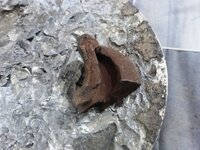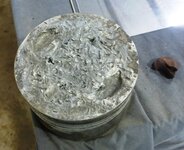FLYBOYJ
"THE GREAT GAZOO"
Hoping to get some input from some of our resident engine experts (ShortRound6, GregP, Tomo, MiTasol, Bill M and Calum, to name a few, I know there's more). I've seen many publications (and some posts on here usually referencing another source) making references to "worn out engines," or "tired engines." I've even seen this in "Bloody Shambles." In my years in aviation I've identified a "worn out engine" as one that is not meeting manufacture's performance specifications, being operated beyond overhaul limits, having accessories (Magnetos, carburetors, generators, FIUs) operating beyond overhaul limits or having items like motor mounts, engine control cables or control cable rod end bushings worn. I even think we might throw oil leakage in there in many cases. IMO I think this term has been thrown around in many cases without merit or substance, and it seems that over the years it was taken at face value. I think in some cases even pilots may have abused this term.
As many of you know, engines can be overhauled and brought back to original performance specifications. I've seen many general aviation engines (which are a lot less robust than engines from WW2) with thousands of hours on the core overhauled to the point where little difference will be noticed when compared with a new engine.
When I see this term in a post or a publication with no specifics I take it with a grain salt unless specifics are given. What's your take on this? Do you think this term is over-used without merit?
As many of you know, engines can be overhauled and brought back to original performance specifications. I've seen many general aviation engines (which are a lot less robust than engines from WW2) with thousands of hours on the core overhauled to the point where little difference will be noticed when compared with a new engine.
When I see this term in a post or a publication with no specifics I take it with a grain salt unless specifics are given. What's your take on this? Do you think this term is over-used without merit?


